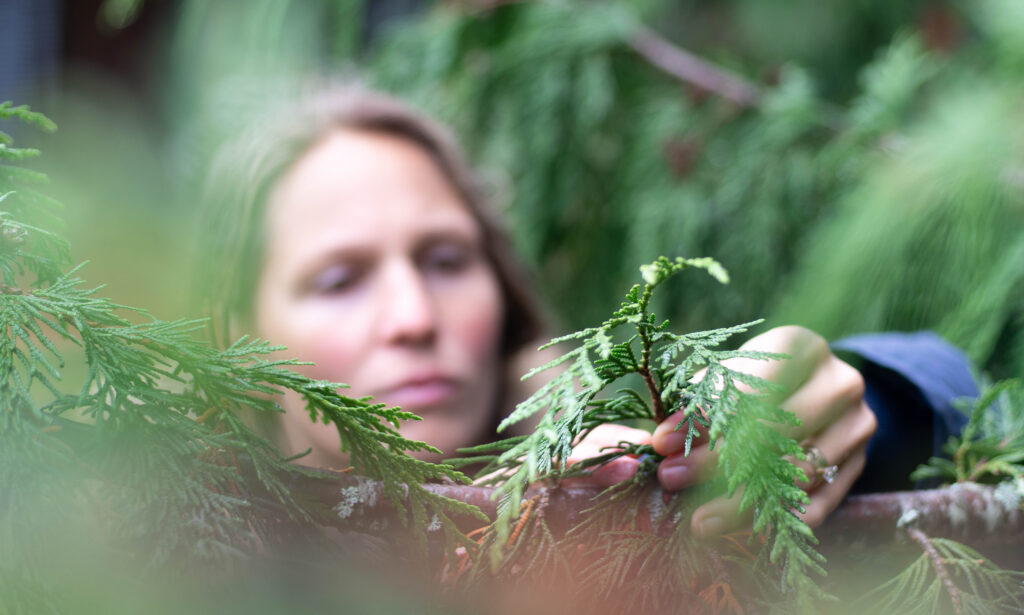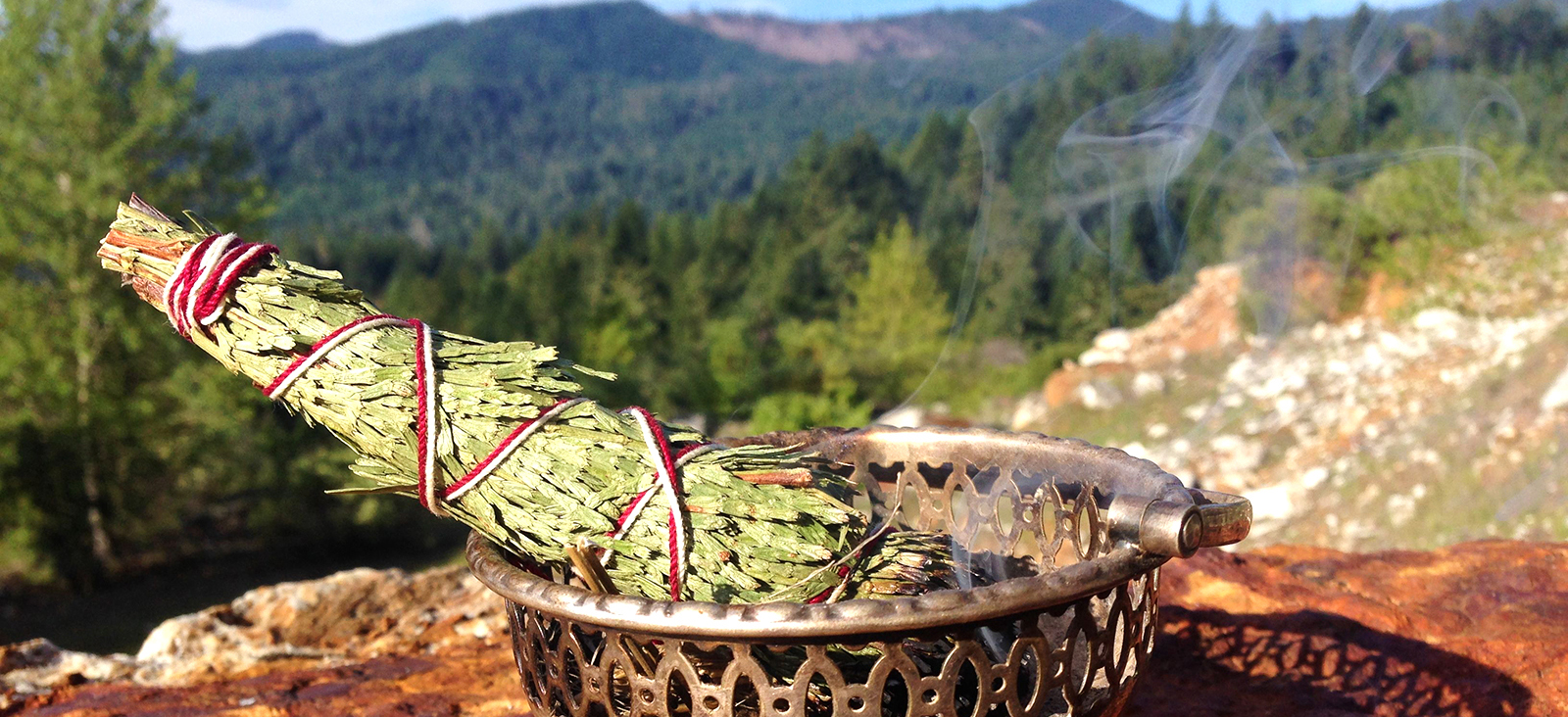
The great Cedar tree will forever be deeply rooted throughout the ancient histories of the world. From its strong, versatile wood to its fragrant and medicinal evergreen foliage, Cedar has supported many different peoples with its countless uses for millennia. There are many species of Cedar which grow in various parts of the world. It can be found throughout the Himalayas to the Olympic Rainforest of the Pacific Northwest.
Western Red Cedar, White Cedar, Lebanon Cedar, Atlas, Eastern, Pacific, Atlantic, Yellow, and Incense Cedar are but a few varieties of the many Cedars of the world. There are a handful of Cedars that are not taxonomically ‘true Cedar’, but due to their botanical similarities and common names, they’ve been adopted into the family. A few of these ‘false Cedars’ are quite common, such as Western Red Cedar, Korean Cedar, Japanese Cedar, and Northern White, to name a few.
Cedar trees have been used for many practical and spiritual purposes for thousands of years. Cedar wood is a strong and sturdy building material that has been used in the construction of buildings and boats since Biblical times. Lebanese Cedar, mentioned repeatedly in the Bible and the Talmud, was said to be the wood of choice used in the building of Solomon’s Temple, as well as many other famous palaces. In addition to its spiritual and symbolical significance, its immense strength, and anti-fungal, anti-bacterial, and insect-repellant properties make it an unmatched building material for long-lasting structures.
To many Native Northwest Coastal peoples of North America, Cedar is still one of the most important trees in the forest. To many Salish tribes, Cedar was a sturdy foundation for their very existence on many different levels. It was used in constructing homes and ceremonial longhouses, in artwork and totem pole carving, mask making, clothing, basket weaving, boat building, sacred and ceremonial objects, and much more.
The smoke from Cedar leaf is employed by many different Native American tribes in prayer, ceremonies, and rituals for both spiritual and practical purposes. Today the use of Cedar as incense can still be found in many traditional Native ceremonies.

Among the Navajo, Lakota, and other Native peoples of North America, Cedar is considered one of the most sacred ceremonial herbs. Many Natives refer to it as “Evergreen Life,” and use it as an offering to the Spirit World, to amplify prayer, to bless and consecrate, and as an aid in visions. It is also used to help the body and mind in times of spiritual anxiety and stress. In another traditional sense, Cedar is used as a spiritual guide, helping people find their purpose in life and helping them stay on their sacred path.
In Tibetan and Nepalese incense crafting, Himalayan Cedar is one of the oldest incense used and represents spiritual dedication and constant faith. It is highly valued in Tibet for aiding meditation and for its reputation of steering strayed individuals back onto their rightful path. Suppose we only see in our mind's eye the profound image of a strong, deeply rooted Cedar tree towering above, standing firm, resistant to the influences of wind, rain, storms, and the elements.
In that case, we might begin to understand the grounding energies that arise from invoking the spirit of Cedar through the burning of its incense. Spiritual dedication, focus, presence, mental clarity, and stillness of thoughts have also been achieved with the help of Cedar incense in many ancient Eastern traditions of meditation and spirituality.
Cedar was also used by ancient Nordic peoples to invoke the spirit of the god Odin, either as a sacrificial incense or by using a staff or wand of the wood in ritual. Cedar incense is often used to fortify personal strength and for stability in times of challenge or struggle. It is said to help transform difficult situations into experiences where wisdom, strength, and willpower can be cultivated.

In Folk Herbalism, Cedar has been employed for its powerful grounding energy. In many esoteric traditions, it is known to help one become more resilient in the face of personal challenges in life. Its predominant Saturnian qualities can help one become more deeply rooted in their personal path, helping to cultivate spiritual strength and foundation. For many, working with Cedar on a spiritual level has helped build confidence and courage. In a psycho-spiritual sense, Cedar incense and essential oil have been used to help people overcome anxiety, self-doubt, and insecurities, strengthening one's roots and stoking the fire of confidence within.
‘Tree of the Gods’, ‘Timber of the Gods’, and ‘Evergreen Life’; these names of praise and reverence show us a glimpse into the rich histories this sacred, wise tree has shared with many cultures in its use as a practical building material, a sacred incense, and a powerful physiological and spiritual medicine.
Cedar is a very profound teacher to many, including myself. Its sharp, energizing aroma and smoke, its deep roots and tall, expansive branches, its evergreen beauty, and its steadfast trunk are all reminders of Cedar’s many virtues. Its blessings of spiritual and emotional strength, grounding, and centering, its deepening of presence, and its majestic immensity await those who wish to call upon the magic and medicine of Cedar, the Evergreen Tree of Life.
Unlock Your Free Issue Of...
🌿 The Aromatic Medicine Garden Membership 🌿
Are you ready for a deeper, holistic dive into the world of aromatic plants? See what our membership is all about with your free sneak peek issue, including an hour-long plant talk and a 21-page plant monograph pdf.

Other Names: Incense Cedar, White Cedar, Red Cedar, Yellow Cedar, Deodar, Timber of the Gods, Atlantic White Cedar, Lebanon Cedar, Western or Pacific Cedar, Atlas Cedar, Evergreen Life
Family: Cupressaceae
Planet: Jupiter, Saturn, Mercury
Element: Water
Chakra: Root
Parts Used: wood, boughs, leaf
Aroma: woody, sharp, green, fresh
Article by Evan Sylliaasen

Evan Sylliaasen is the founder of the Northwest School of Aromatic Medicine and Higher Mind Incense. For the past decade, his incense company has been a leader in sustainability and conscious sourcing of aromatic plants. As the head instructor of his online school, he teaches aromatherapists, incense lovers, herbalists, and spiritually-minded folks the traditional art of incense crafting, incense as medicine, and the art of wild-harvesting aromatic plants responsibly.
Evan lives with his family in the foothills of the Olympic Mountains of Washington state. He channels his creative passions through writing, photography, woodworking, craftsman building, and music. When he’s not working, he’s out in the garden, forest, and fields, walking along rivers, beaches, or in the mountains breathing deeply.
© 2016-2021 Evan Sylliaasen, The Northwest School of Aromatic Medicine. All Rights Reserved.
*The statements above have not been evaluated by the FDA. This article is not intended to diagnose, treat, cure, or prevent any disease.
